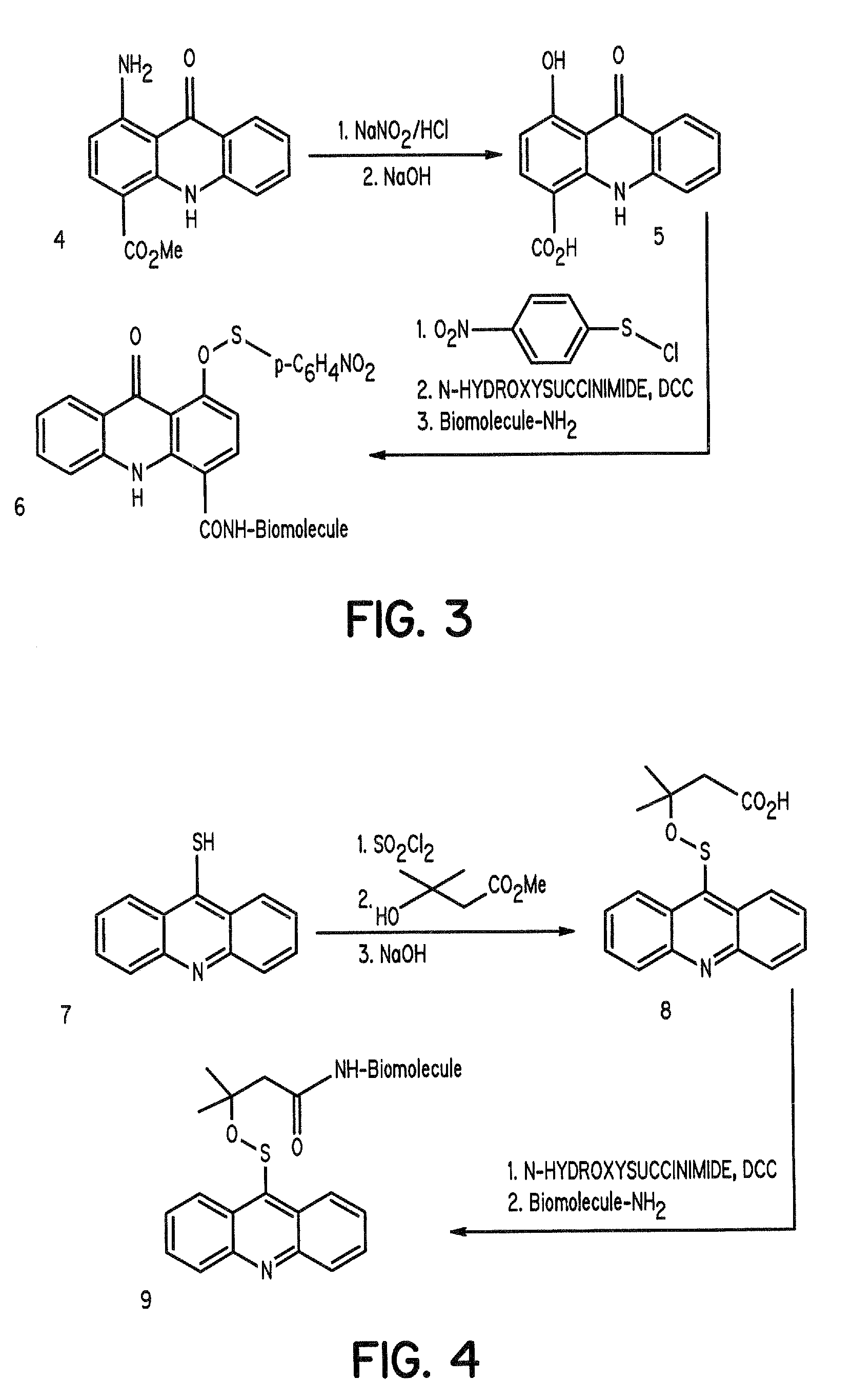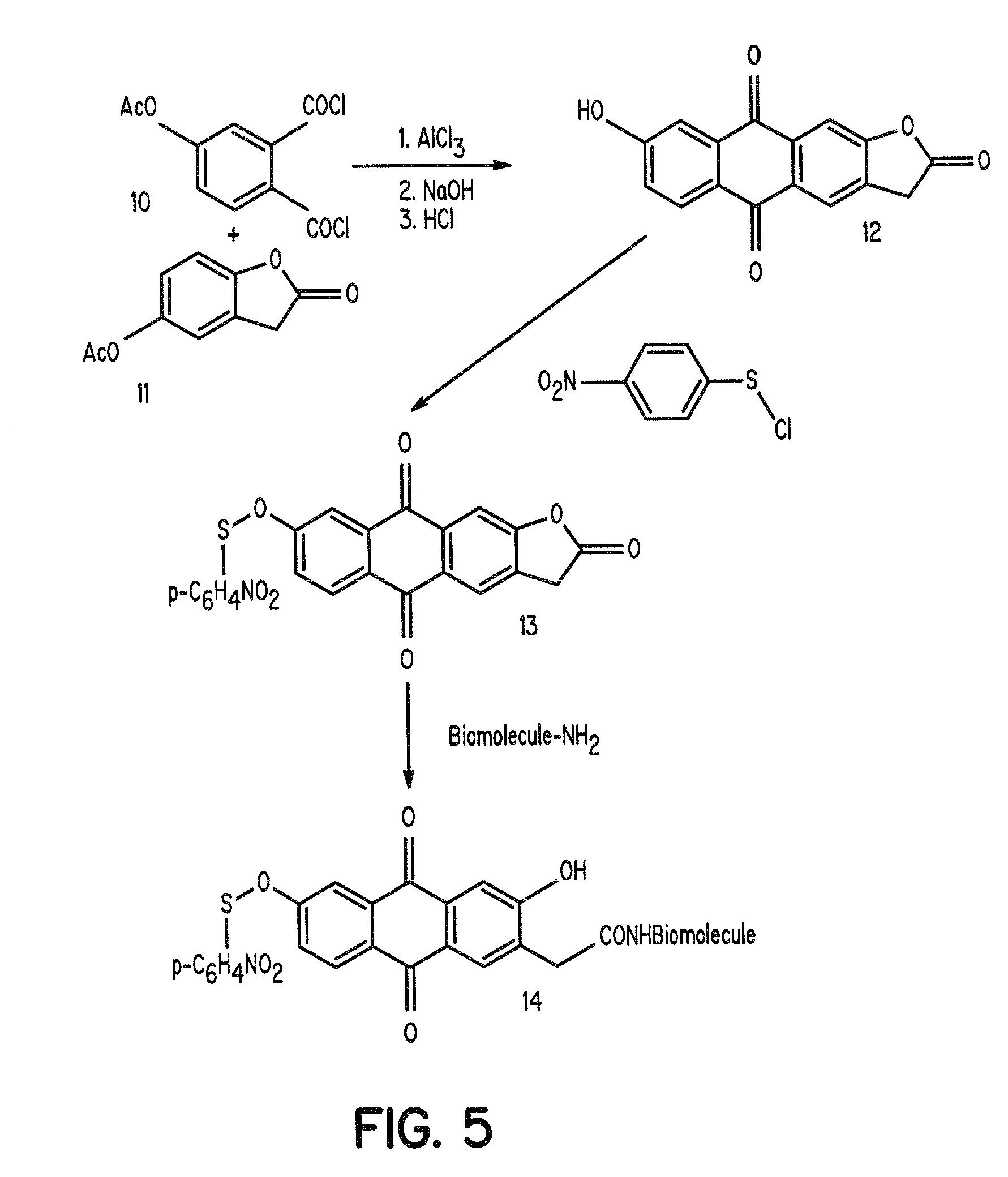Aromatic sulfenates for type 1 phototherapy
a technology of sulfenates and sulfenates, applied in the direction of drug compositions, peptides, aerosol delivery, etc., can solve the problems of low singlet oxygen quantum yield, low molar absorption, cell death,
- Summary
- Abstract
- Description
- Claims
- Application Information
AI Technical Summary
Benefits of technology
Problems solved by technology
Method used
Image
Examples
example
Synthesis of sulfenate-bombesin (7-14) conjugate
[0051]The peptide is prepared by fluorenylmethoxycarbonyl (Fmoc) solid phase peptide synthesis strategy with a commercial peptide synthesizer from Applied Biosystems (Model 432A SYNERGY Peptide Synthesizer). The first peptide cartridge contains Wang resin pre-loaded with an amide resin on 25-μmole scale. The amino acid cartridges are placed on the peptide synthesizer and the product is synthesized from the C- to the N-terminal position. Coupling of the Fmoc-protected amino acids (75 μmol) to the resin-bound free terminal amine (25 μmol) is carried out with 2-(1H-benzotriazol-1-yl)-1,1,3,3-tetramethyluronium hexafluorophosphate (HBTU, 75 μmol) / N-hydroxybenzotriazole (HOBt, 75 μmol). Each Fmoc protecting group on the solid support was removed with 20% piperidine in dimethylformamide before the subsequent amino acid was coupled to it. The last cartridge contains sulfenate acid, which is coupled to the peptide automatically, thus avoiding ...
PUM
| Property | Measurement | Unit |
|---|---|---|
| wavelength | aaaaa | aaaaa |
| wavelength | aaaaa | aaaaa |
| wavelength | aaaaa | aaaaa |
Abstract
Description
Claims
Application Information
 Login to View More
Login to View More - R&D
- Intellectual Property
- Life Sciences
- Materials
- Tech Scout
- Unparalleled Data Quality
- Higher Quality Content
- 60% Fewer Hallucinations
Browse by: Latest US Patents, China's latest patents, Technical Efficacy Thesaurus, Application Domain, Technology Topic, Popular Technical Reports.
© 2025 PatSnap. All rights reserved.Legal|Privacy policy|Modern Slavery Act Transparency Statement|Sitemap|About US| Contact US: help@patsnap.com



